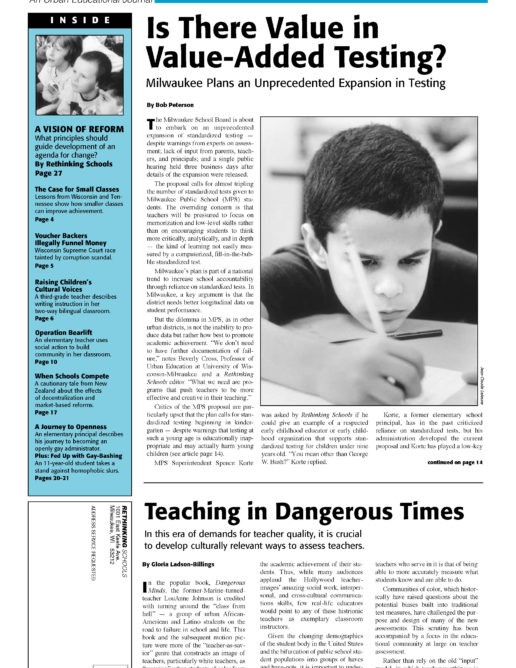Preview of Article:
Raising Children’s Cultural Voices
A third-grade teacher describes how she uses children's writing to expand cultural awareness and teach Spanish and English in a two-way bilingual program.
In our program, the language of instruction is separated by classroom. There are two classrooms with one teacher for each language. I always use English in my classroom and Ramona always uses Spanish in hers. Two groups of students spend an equal amount of time in each language, rotating between Spanish and English classrooms biweekly. Each class group has a mix of students who speak Spanish or English as their native language. Students are becoming bilingual to varying degrees, depending on how long they have been in the two-way program. Teachers speak only one language, while students may use either language as they are acquiring the new language.
The language immersion in our classrooms is supported by team teaching. The team spends time coordinating the development of the curriculum so that it develops sequentially. We do not repeat teaching content. Students follow the development of ideas in one language at a time. For example, a child may start the math investigations unit on patterns in Spanish and finish it in English. In other cases, an entire unit will be presented in one language, and then we move to studying the next unit in the other language. In each classroom, students who are at ease in both languages are resources to their peers in the learning process. Both languages are used as a tool for students to explore and interact with their world.
The integration of students from diverse cultural and linguistic backgrounds is achieved through cooperative learning groups. We do not believe in tracking or ability grouping. Children learn and play together with their peers, many of whom are neighbors in their community. Learning together, they are protected from the harm that segregated student groupings may cause to their spirit and ability to learn. In our child-centered classrooms, the children are language resources for one another. We take care to group students with mixed abilities in each cooperative group. For example, social studies curriculum includes building skills for cooperative learning, cross-cultural understanding, and conflict resolution. Each group will have members who are strong in English, Spanish, reading, writing, drawing, and so on. In our collaborative learning environment, differences are good and necessary for the success of the challenging work of learning two languages.
There are many principles contributing to the effectiveness of our program, in particular, our use of the arts to develop students’ cultural voices, our integrated approach to learning, and our belief that learning happens in a web of relationships, not only among peers but within the wider scope of the community. [For a more complete explanation, see my chapter in the book Lifting Every Voice: Pedagogy and Politics of Bilingualism, edited by Zeynep F. Bekont (Cambridge: Harvard Education Publishing Group, 2000), 71-94.]
In this article, I would like to concentrate on how we use writing as the gateway to literacy.</p

